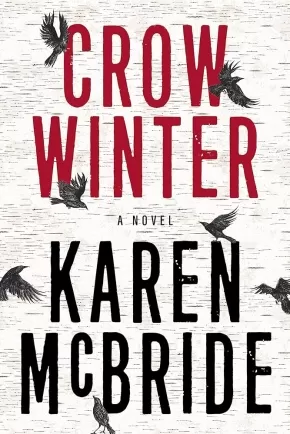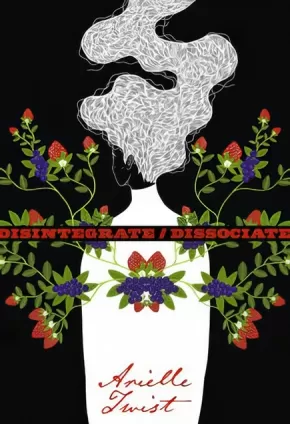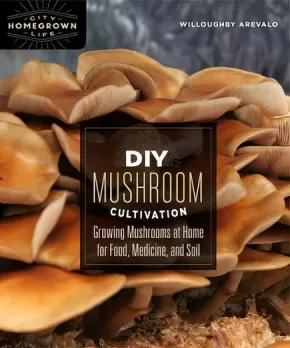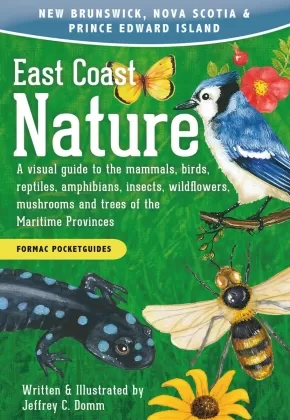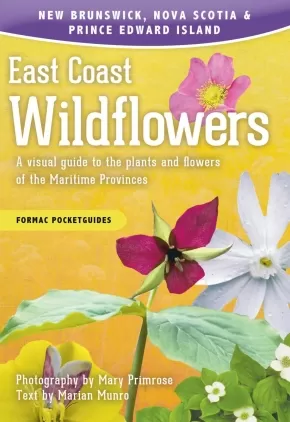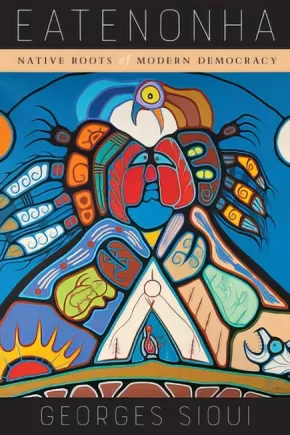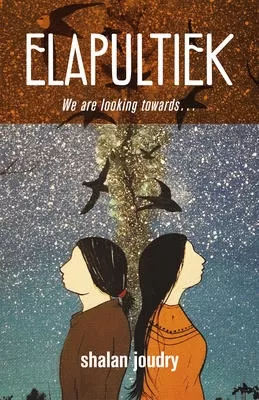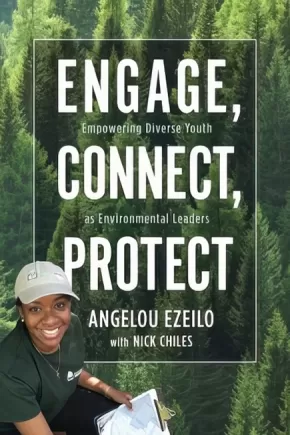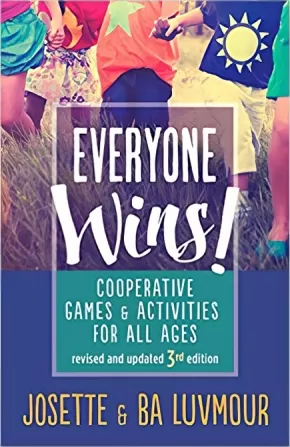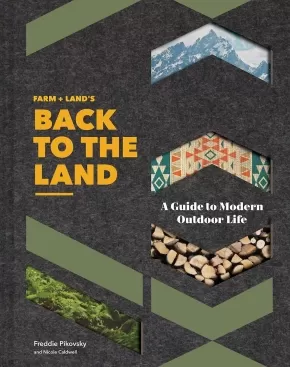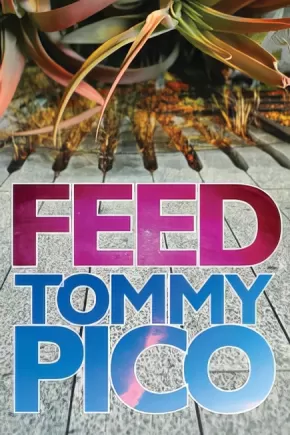Adult Book
Synopsis:
Nanabush. A name that has a certain weight on the tongue—a taste. Like lit sage in a windowless room or aluminum foil on a metal filling.
Trickster. Storyteller. Shape-shifter. An ancient troublemaker with the power to do great things, only he doesn’t want to put in the work.
Since coming home to Spirit Bear Point First Nation, Hazel Ellis has been dreaming of an old crow. He tells her he’s here to help her, save her. From what, exactly? Sure, her dad’s been dead for almost two years and she hasn’t quite reconciled that grief, but is that worth the time of an Algonquin demigod?
Soon Hazel learns that there’s more at play than just her own sadness and doubt. The quarry that’s been lying unsullied for over a century on her father’s property is stirring the old magic that crosses the boundaries between this world and the next. With the aid of Nanabush, Hazel must unravel a web of deceit that, if left untouched, could destroy her family and her home on both sides of the Medicine Wheel.
Reviews
“Full of spirit, love, mystery and good medicine, Crow Winter tells the story of Hazel and one very tricky little crow. Karen McBride’s debut novel ambitiously and successfully balances all these things creating a world and story that will stay with you after you have turned that last page.” - Katherena Vermette, award-winning author of The Break
"Algonquin Anishinaabe writer Karen McBride's debut is about a young woman who moves home to her First Nation reserve after losing her father. Dealing with grief and while memories are flooding her thoughts, Hazel's dreams are disturbed by her trickster kin, a crow, Nanabush.
As she starts to unravel her father's history with a local quarry, the crow is a constant companion and guides her to find the truth. The physical and spiritual worlds are seamlessly woven together, and we are taken inside the experience Hazel is having reconciling her truth with her father's and the imposing facts of the real world.
A lovely story full of spirit and imagery that stays with you long after the final page. Karen is a writer to watch." - Sandy, indieCHOICE
Additional Information
352 pages | 5.50" x 8.50"
Synopsis:
A collection of letter and prayer poems in which an Indigenous speaker engages with non-Indigenous famous Canadians.
D.A. Lockhart's stunning and subversive fourth collection gives us the words, thoughts, and experiences of an Anishinaabe guy from Central Ontario and the manner in which he interacts with central aspects and icons of settler Canadian culture. Riffing off Richard Hugo's 31 Letters and 13 Dreams, the work utilizes contemporary Indigenous poetics to carve out space for often ignored voices in dominant Canadian discourse (and in particular for a response to this dominance through the cultural background of an Indigenous person living on land that has been fundamentally changed by settler culture).
The letter poems comprise a large portion of this collection and are each addressed to specific key public figures--from Sarah Polley to Pierre Berton, k.d. lang to Robertson Davies, Don Cherry to Emily Carr. The second portion of the pieces are prayer poems, which tenderly illustrate hybrid notions of faith that have developed in contemporary Indigenous societies in response to modern and historical realities of life in Canada. Together, these poems act as a lyric whole to push back against the dominant view of Canadian political and pop-culture history and offer a view of a decolonized nation.
Because free double-doubles...
tease us like bureaucratic promises
of medical coverage and housing
not given to black mold and torn-
off siding. Oh Lord, let us sing anew,
in this pre-dawn light, a chorus
that shall not repeat Please Play Again. (from "Roll Up the Rim Prayer")
Reviews
"Rock-solid... full of heartfelt grit and conviction. D.A. Lockhart conjures the world through a catalogue of vivid particulars and a cast of inimitable characters, from Edna Puskamoose, a locally famous Pow-Wow dancer, to James Bond, that internationally notorious 'colonial trickster'. THis is poetry that follows the 'right crooked path' through 'the medicine smoke of history". - Campbell McGrath
Educator Information
Recommended in the Canadian Indigenous Books for Schools 2020/2021 resource list for grade 12 for English Language Arts and Social Studies.
Caution: Mature, foul language used throughout. The term "Indian" is also used throughout.
Additional Information
72 pages | 6.00" x 8.75"
Synopsis:
Art has always played a significant role in the history of the labour movement. Songs, stories, poems, pamphlets, and comics, have inspired workers to take action against greedy bosses and helped shape ideas of a more equal world. They also help fan the flames of discontent. Radical social change doesn’t come without radical art. It would be impossible to think about labour unrest without its iconic songs like “Solidarity Forever” or its cartoons like Ernest Riebe’s creation, Mr. Block.
In this vein, The Graphic History Collective has created an illustrated chronicle of the strike—the organized withdrawal of labour power—in Canada. For centuries, workers in Canada—Indigenous and non-Indigenous, union and non-union, men and women—have used the strike as a powerful tool, not just for better wages, but also for growing working-class power. This lively comic book will inspire new generations to learn more about labour and working-class history and the power of solidarity.
Reviews
"There are so many exciting and vitally important stories from the history of social movements, and the most engaging way to tell those stories is through art, in its various forms. The Graphic History Collective is brilliantly doing just that." - David Rovics, singer, songwriter, activists
"The Graphic History Collective shows us that art can inspire hope for radical social change" - Noam Chomsky
"Brilliant in narrative power and artistic expression, Direct Action Gets the Goods offers more proof of the Graphic History Collective's prowess with the graphic form. Magnificent!" - Paul Buhle
"Direct Action Gets the Goods is a brilliant and essential resource. Through well-researched history and powerful graphic art, it shows how the strike is key to revolutionary unionism and social movement solidarity. This book will inspire future generations to fight and win against bosses and capitalism." – Harsha Walia, community organizer and author of Undoing Border Imperialism
Educator Information
The Graphic History Collective is made up of activists, artists, writers, and researchers passionate about comics, history, and social change. They produce alternative histories - people's histories - in an accessible format to help people understand the historical roots of contemporary social issues.
Additional Information
64 pages | 8.50" x 11.00" | 80 illustrations
Authenticity and Content Note: This work contains contributions from Gord Hill, a member of the Kwakwaka'wakw Nation. Indigenous content and perspectives, therefore, may be included but are not the sole focus of the work.
Synopsis:
In her powerful debut collection of poetry, Arielle Twist unravels the complexities of human relationships after death and metamorphosis. In these spare yet powerful poems, she explores, with both rage and tenderness, the parameters of grief, trauma, displacement, and identity. Weaving together a past made murky by uncertainty and a present which exists in multitudes, Arielle Twist poetically navigates through what it means to be an Indigenous trans woman, discovering the possibilities of a hopeful future and a transcendent, beautiful path to regaining softness.
Awards
- 2020 Indigenous Voices Awards Winner for Published Poetry in English
Additional Information
|
Synopsis:
Bring mushrooms into your life as you dive into the practice of home-scale mushroom cultivation.
With applications in permaculture, urban farming, cooking, natural medicine, and the arts, interest in home-scale mushroom cultivation is exploding. Yet many beginners remain daunted by the perceived complexity of working with fungi.
DIY Mushroom Cultivation is the remedy, presenting proven, reliable, low-cost techniques for home-scale cultivation that eliminate the need for a clean-air lab space to grow various mushrooms and their mycelium.
Beautiful full-color photos and step-by-step instructions accompany a foundation of mushroom biology and ecology to support a holistic understanding of the practice. Growing techniques are applicable year-round, for any space from house to apartment, and for any climate, budget, or goal. Techniques include:
- Setting up a home growing space
- Inexpensive, simple DIY equipment
- Culture creation from mushroom tissue or spores
- Growing and using liquid cultures and grain spawn
- Growing mushrooms on waste streams
- Indoor fruiting
- Outdoor mushroom gardens and logs
- Harvesting, processing, tinctures, and cooking.
Whether you hunt mushrooms or dream about growing and working with them but feel constrained by a small living space, DIY Mushroom Cultivation is the ideal guide for getting started in the fascinating and delicious world of fungiculture.
Series Information
This book is part of the Homegrown City Life Series:
You’d like to be self-sufficient, but the space you have available is tighter than your budget. If this sounds familiar, the Homegrown City Life series was created just for you! Authors of this series will help you navigate the wide world of homesteading, regardless of how big (or small!) your space and budget may be. Topics range from cheesemaking to gardening and composting—everything the budding urban homesteader needs to succeed!
Increase your self-reliance:
- Take back DIY skills
- Work with the space you have, apartment balcony or suburban backyard
- Learn about fermenting, crafting, growing, preserving, and other skills for the urban homesteader.
Additional Information
208 pages | 7.50" x 9.00"
Synopsis:
This concise pocketguide helps you discover and identify the most common plants and animals in Canada's Maritime provinces. Compiled by species and type, this guide makes it easy to find information on our natural heritage.
Features include:
- Full-colour illustrations
- Detailed information and descriptions
- Visual guide for size
- Symbols and legend.
Additional information
128 pages | 5.51" x 8.03" | 100+ Colour Illustrations
Synopsis:
This beautiful pocket guide helps you learn about and identify many common and rare wildflowers in Canada's Maritime provinces.
Features include:
- Full-colour photographs
- Detailed information and descriptions
- Organized by season
- Grouped by colour for quick identification.
Additional information
96 pages | 5.51" x 8.03" | 80+ Colour Photographs
Synopsis:
An exploration of the historical and future significance of Canada's Native soul.
Eatenonha is the Wendat word for love and respect for the Earth and Mother Nature. For many Native peoples and newcomers to North America, Canada is a motherland, an Eatenonha - a land in which all can and should feel included, valued, and celebrated.
In Eatenonha Georges Sioui presents the history of a group of Wendat known as the Seawi Clan and reveals the deepest, most honoured secrets possessed by his people, by all people who are Indigenous, and by those who understand and respect Indigenous ways of thinking and living. Providing a glimpse into the lives, ideology, and work of his family and ancestors, Sioui weaves a tale of the Wendat's sparsely documented historical trajectory and his family's experiences on a reserve. Through an original retelling of the Indigenous commercial and social networks that existed in the northeast before European contact, the author explains that the Wendat Confederacy was at the geopolitical centre of a commonwealth based on peace, trade, and reciprocity. This network, he argues, was a true democracy, where all beings of all natures were equally valued and respected and where women kept their place at the centre of their families and communities.
Identifying Canada's first civilizations as the originators of modern democracy, Eatenonha represents a continuing quest to heal and educate all peoples through an Indigenous way of comprehending life and the world.
Reviews
"Eatenonha is a unique interweaving of self, family, First Nation, and Indigenous peoples of the Americas and elsewhere." - John Steckley, Humber College
Educator Information
Recommended in the Canadian Indigenous Books for Schools 2020/2021 resource list for grades 10 to 12 for use in these areas: English Language Arts and Social Studies.
Additional Information
200 pages | 6.00" x 9.00"
Synopsis:
Set in contemporary times, a young Mi'kmaw drum singer and a Euro-Nova Scotian biologist meet at dusk each day to count a population of endangered Chimney Swifts (kaktukopnji'jk). They quickly struggle with their differing views of the world. Through humour and story, the characters must come to terms with their own gifts and challenges as they dedicate efforts to the birds. Each "count night" reveals a deeper complexity of connection to land and history on a personal level.
Inspired by real-life species at risk work, shalan joudry originally wrote this story for an outdoor performance.
Elapultiek calls on all of us to take a step back from our routine lives and question how we may get to understand our past and work better together. The ideal of weaving between Indigenous and non-Indigenous worlds involves taking turns to speak and to listen, even through the most painful of stories, in order for us all to heal. We are in a time when sharing cultural, ecological, and personal stories is vital in working towards a peaceful shared territory, co-existing between peoples and nature.
"It's a crucial time to have these conversations," offers joudry. "The power of story can engage audience and readers in ways that moves them to ask more questions about the past and future."
Additional Information
96 pages | 6.00" x 9.00"
Synopsis:
Building environmental strength through a diversity of youth.
While concern about the state of our land, air, and water continues to grow, there is widespread belief that environmental issues are primarily of interest to wealthy white communities. Engage, Connect, Protect explodes this myth, revealing the deep and abiding interest that African American, Latino, and Native American communities – many of whom live in degraded and polluted parts of the country – have in our collective environment.
Part eye-opening critique of the cultural divide in environmentalism, part biography of a leading social entrepreneur, and part practical toolkit for engaging diverse youth, Engage, Connect, Protect covers:
- Why communities of color are largely unrecognized in the environmental movement
- Bridging the cultural divide and activate a new generation of environmental stewards
- A curriculum for engaging diverse youth and young adults through culturally appropriate methods and activities
- A resource guide for connecting mainstream America to organizations working with diverse youth within environmental projects, training, and employment.
Engage, Connect, Protect is a wake-up call for businesses, activists, educators, and policymakers to recognize the work of grassroots activists in diverse communities and create opportunities for engaging with diverse youth as the next generation of environmental stewards.
Educator Information
While this work has a US focus, it is still extremely relevant in other countries like Canada.
Additional Information
256 pages | 6.00" x 9.00"
Synopsis:
Environmental Activism on the Ground draws upon a wide range of interdisciplinary scholarship to examine small scale, local environmental activism, paying particular attention to Indigenous experiences. It illuminates the questions that are central to the ongoing evolution of the environmental movement while reappraising the history and character of late twentieth and early twenty-first environmentalism in Canada, the United States, and beyond.
This collection considers the different ways in which Indigenous and non-Indigenous activists have worked to achieve significant change. It examines attempts to resist exploitative and damaging resource developments, and the establishment of parks, heritage sites, and protected areas that recognize the indivisibility of cultural and natural resources. It pays special attention to the thriving environmentalism of the 1960s through the 1980s, an era which saw the rise of major organizations such as Greenpeace along with the flourishing of local and community-based environmental activism.
Environmental Activism on the Ground emphasizes the effects of local and Indigenous activism, offering lessons and directions from the ground up. It demonstrates that the modern environmental movement has been as much a small-scale, ordinary activity as a large-scale, elite one.
Reviews
"Environmental Activism on the Ground succeeds splendidly in complicating and enriching our understanding of modern environmentalism. Focusing on Indigenous and non-Indigenous activists in an impressive range of settings, Jonathan Clapperton and Liza Piper draw together and interpret diverse methodological and conceptual insights in a way that gives new, deserved prominence to those who have strived—and continue to strive—for environmental justice at the local level. These accounts left me both enlightened and heartened. Scholars from across the humanities and social sciences will welcome this volume." - Richard A. Rajala, Department of History, University of Victoria.
Educator Information
Table of Contents:
Illustrations
Acknowledgments
Introduction: In the Shadow of the Green Giants: Environmentalism and Civic Engagements - Jonathan Clappeton & Liza Piper
Part 1: Processes and Possibilities
1. Strategies for Survival: First Nations Encounters with Environmentalism - Anna J. Willow
2. Native/Non-Native Alliances: Challenging Fossil Fuel Industry Shipping at Pacific Northwest Ports - Zoltán Grossman
3. Conserving Contested Ground: Soverigenty-Driven Stewardship by the White Mountain Apache Tribe and the Fort Apache Heritage Foundation - Jon R. Welch
4. From Southern Alberta to Northern Brazil: Indigenous Conservation and the Preservation of Cultural Resources - Sterling Evans
5. Parks For and By the People: Acknowledging Ordinary People in the Formation, Protection, and Use of State and Provincial Parks - Jesica M. DeWitt
Part 2: Histories
6. Alternatives: Environmental and Indigenous Activism in the 1970s - Liza Piper
7. Marmion Lake Generating Station: Another Northern Scandal? - Tobasonakwut Peter Kinew
8. Environmental Activism as Anti-Conquest: The Nuu-chah-nulth and Environmentalists in the Contact Zone of Clayoquont Sound - Jonathan Clapperton
9. Local Economic Independence as Environmentalism: Nova Scotia in the 1970s - Mark Leeming
10. “Not an Easy Thing to Implement”: The Conservation Council of New Brunswick and Environmental Organization in a Resource-Dependent Province, 1969-1983 - Mark J. McLaughlin
11. The Ebb and Flow of Local Environmental Activism: The Society for Pollution and Environmental Control (SPEC), British Columbia - Jonathan Clapperton
12: From Scoieal Movement to Environmental Behemoth: How Greenpeace Got Big - Frank Zelko
Afterword: Lessons from the Ground Up - Jonathan Clapperton & Liza Piper
Bibliography
List of Contributors
Index
Additional Information
752 pages | 6.00" x 9.00"
Authenticity Note: Because this work includes contributions from Indigenous peoples, it has been labelled as containing Authentic Indigenous Text.
Synopsis:
Over 25,000 copies sold — promote optimal well-being and social justice through 170+ games and activities for all ages.
At this critical point of human evolution, we want our children to have the ability to resolve conflict, communicate positively, build social skills, and increase self-esteem so that they may actualize their potential and live in well-being.
The highly sought-after 3rd edition of the best-selling, Parent Choice Award-winning book Everyone Wins: Cooperative Games and Activities for All Ages features over 170 well-designed cooperative games and activities. Developmentally appropriate and indexed according to age level, group size, activity level, and location, Everyone Wins offers great value through evaluating interpersonal dynamics, teaching social justice, and assessing development capacities.
By popular request, new features include:
- Information on development and learning in children and youth
- New and updated games and activities
- An overview of Natural Learning Relationships for whole-child development
Everyone Wins is an easy to use, quick reference guide for everyone who cares for and about children, education, and the actualization of social well-being in a diverse range of environments.
Reviews
"Everyone Wins! can be used during PE classes—in the gym or on the school field—during recess breaks, in the classroom, or in outdoor education time. Playing the games as suggested in the book would be a great way to start, and after some practice, students could help to create variations. For intermediate students, this could also lead to the students inventing their own games to share with their classmates, allowing them to become the teachers during PE classes" - Cindy Haack, Canadian Teacher Magazine, Fall 2019 Issue
Additional Information
176 pages | 5.50" x 8.50" | 5 illustrations | 3rd Edition
Synopsis:
Selected by Kathy Fagan as a winner of the 2018 National Poetry Series, Eyes Bottle Dark with a Mouthful of Flowers is a debut collection of poems by a dazzling geologist of queer eros.
Drunktown, New Mexico, is a place where men “only touch when they fuck in a backseat.” Its landscape is scarred by violence: done to it, done on it, done for it. Under the cover of deepest night, sleeping men are run over by trucks. Navajo bodies are deserted in fields. Resources are extracted. Lines are crossed. Men communicate through beatings, and football, and sex. In this place, “the closest men become is when they are covered in blood / or nothing at all.”
But if Jake Skeets’s collection is an unflinching portrait of the actual west, it is also a fierce reclamation of a living place—full of beauty as well as brutality, whose shadows are equally capable of protecting encounters between boys learning to become, and to love, men. Its landscapes are ravaged, but they are also startlingly lush with cacti, yarrow, larkspur, sagebrush. And even their scars are made newly tender when mapped onto the lover’s body: A spine becomes a railroad.“Veins burst oil, elk black.” And “becoming a man / means knowing how to become charcoal.” Rooted in Navajo history and thought, these poems show what has been brewing in an often forgotten part of the American literary landscape, an important language, beautiful and bone dense.
Sculptural, ambitious, and defiantly vulnerable, the poems of Eyes Bottle Dark with a Mouthful of Flowers are coal that remains coal, despite the forces that conspire for diamond, for electricity.
Reviews
“Jake Skeets writes with such sparse yet full beauty, you sometimes don’t know where the source of the power of these poems comes from. It is in the power of his language, in the craft, of course. It is in how the brutal experience of pain and loss can become a thing of beauty, which is where grace lives, which is where the best art comes from. There is so much bottle-dark beauty here. Skeets is a new, essential voice in poetry, in literature.”—Tommy Orange
"Incredibly beautiful . . . Skeets's simple lines are highly impactful as they explore the complexities of love, desire and drunkenness and dirt and death."—Electric Literature
"Skeets's raw debut offers beautiful imagery and memorable emotional honesty . . . [this collection] subtly rebukes the hypermasculinity that breeds homophobia and violence and excoriates the centuries of oppression that have caused the scourge of alcohol abuse in Native American communities."—Publishers Weekly
“On its surface, Eyes Bottle Dark with a Mouthful of Flowers is an examination of toxic masculinity through the lens of a queer, indigenous Southwesterner, a book in which alcoholism, violence, and sex under cover of night are both ruefully and sensually described. But experiencing Jake Skeets’s collection is more akin to listening to a musical score to, or watching the choreography of, one Diné man’s vivid boyhood, the family and community of that boyhood, and the landscape holding them all. Indeed, like a lover, the land of these poems enters and ornaments Skeets’s men, old and young, dead and alive. His images haunt, and his use of repetition, field, and fragment provide the book’s structural genius. His is a major debut that feels to me timely and timeless—‘boys only hold boys / like bottles’—and is my singular joy to introduce.”—Kathy Fagan
“Jake Skeets takes us to ‘The Indian Capital of the World,’ a landscape of erosion and erasure, where ‘boys only hold boys / like bottles’ and eros is a dangerous thing. In the brush and horseweed, ghosts and trains and abandoned trailers, a young Diné attempts to answer all the question marks of adolescence and early adulthood, desire and death commingling around him. These are poems born of unspokenness, testing the limits of language, love, and silence.”—D. A. Powell
"An amazing debut collection from Diné poet Jake Skeets that explores his experience and that of Native peoples with the American Southwest. Skeets's ability to use form and innovate with structure amplify his innate talent for constructing language that is simultaneously lush and razor sharp. Grappling with alcoholism, queer sexuality, and toxic masculinity, his poems confront and challenge; but through its swirl of violence and beauty, Eyes Bottle Dark with a Mouthful of Flowers is always vividly gorgeous."—Caleb Masters, Bookmarks
Additional Information
96 pages | 5.50" x 8.50"
Synopsis:
FARM + LAND'S Back to the Land: A Modern Guide to Outdoor Life is a collection of stories about slow living, sustainability, and the value of doing things with your own two hands.
This gorgeous book features remarkable narratives, essential how-tos, and hundreds of breathtaking photographs from people who have embraced lives of adventure in wild places.
With gorgeous photography, engaging stories, practical tips, and useful illustrations, this book offers an escape into a world of simple pleasures, contentment, and a rural way of life.
- Focuses on the back-to-the-land movement
- A visually driven celebration of cozy homes and wild landscapes
- Embraces life's simple and enduring pleasures
FARM + LAND'S Back to the Land: A Modern Guide to Outdoor Life features places like a spectacular treehouse suspended above a lush forest, a cozy cabin perched on a mountainside, and a small farm growing heirloom vegetables in the high desert.
This book is a must-have for outdoor enthusiasts and anyone who has ever dreamed of escaping to a simpler way of life.
- Delivered in a highly giftable and handsome volume that inspires feelings of wanderlust.
- The perfect gift for Father's Day and the holidays, as well as for outdoors enthusiasts, travel lovers, camping fans, and readers of Dwell, Modern Farmer, and Kinfolk.
- Includes information on homesteading and outdoor skills such as how to build a desert vegetable garden; how to cut, split, and stack firewood; how to build a wood-fired hot tub; how to raise chickens and honeybees; how to make essential oils; and more!
Additional Information
272 pages | 7.65" x 9.60" | 350 full-colour photographs
Synopsis:
From the Winner of the Whiting Award, an American Book Award, and finalist for a Lambda, Tommy Pico's Feed is the final book in the Teebs Cycle.
Feed is the fourth book in the Teebs tetralogy. It's an epistolary recipe for the main character, a poem of nourishment, and a jaunty walk through New York's High Line park, with the lines, stanzas, paragraphs, dialogue, and registers approximating the park's cultivated gardens of wildness. Among its questions, Feed asks what's the difference between being alone and being lonely? Can you ever really be friends with an ex? How do you make perfect mac & cheese? Feed is an ode of reconciliation to the wild inconsistencies of a northeast spring, a frustrating season of back-and-forth, of thaw and blizzard, but with a faith that even amidst the mess, it knows where it's going.
Reviews
"Funny, irreverent, profound. This book is an ode to love and language and food and what right now sounds like. It’s also a meditation on what it means to belong on/to this planet/universe. Delivered in headlines, texts, conversations, song lyrics, puns, rhymes, and speculation about the possibility of life on other planets, Tommy Pico’s Feed sprawls across time and this country. It is endlessly inventive and stays fun while bringing the heat and weight of a world we’re all helplessly watching burn down. As his character/AKA Teebs says of Oakland rapper Two $hort, the same is true of Tommy Pico in this book and in general: Vigor is the art he argues for."—Tommy Orange
"Tommy Pico’s Feed is the poet’s most ambitious work yet. Part tour diary, part tracklist, part play, part by part Pico tops his epic run of books off with this gut-wrenching, gut-busting, gutter mouth offering of a body in lust, in isolation, in danger, in memory, in future and all the transits between. Feed is a feast of Pico’s signature intellect, humor, and linguistic demolition—all sharper than ever. No one corrals our day’s chaos like Pico, who serves it up to us as some of the wildest verse the world has ever seen." —Danez Smith
Additional Information
84 pages | 6.00" x 9.00"

